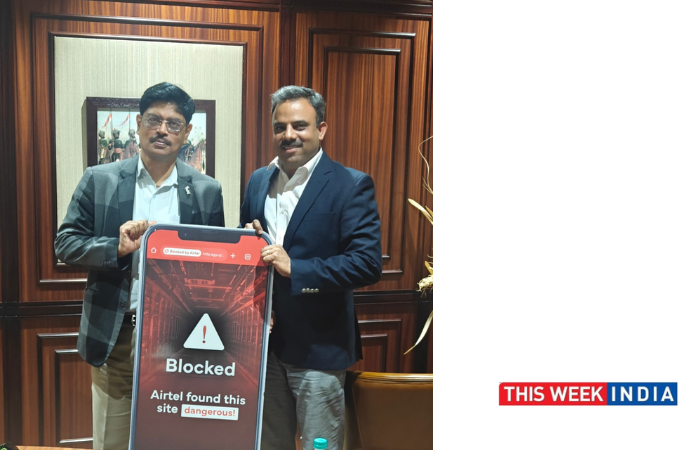By Dr. Sujay Prasad, Medical Director, Neuberg Diagnostics
As the COVID pandemic escalated, our Government stepped in and took charge of the situation by spreading awareness regarding diagnosis and treatment. Additionally, our govt is now opening vaccination for everyone. Before the pandemic affected our life as we knew it, most of the materials such as PPE kits, consumables for medical uses, medical equipment, ventilators, amongst others were either exported or had very limited production capacity in India. During and following the first wave it became clear that we as a country had to indigenise the manufacturing and production of such products. The government supported companies with “make in India” program and now we export some products, in some of the category, to other countries.
Diagnostic labs played an essential role in making clinical decisions easy and this helped patients during the pandemic. Significant innovations were visible and its access to common man was accelerated in the Indian healthcare and diagnostic sector. The diagnostics industries (both manufactures and distributors) managed to overcome the virus by indigenising the manufacturing of medical equipment, disposables, drugs, and vaccines in-house, ably supported by the government “make in India” program. The awareness and literacy about the wellness have been bringing transformation in the industry.
Some of the major transformations and advancements that contributed to COVID management are:
- Doorstep services
Home collection services are now a preferred option by most people because of the convenience, safety and peace of mind. Private labs have seen a considerable increase in home collection for routine samples even after the lockdown was lifted. At Neuberg we pioneered 24*7 home collection services even before the pandemic which provided free round-the-clock lab services, including ECG, at the customer’s doorstep. We were the first one who launched drive through services for routine tests looking at the convenience of working professional, as they did not have to come out of their vehicle in the entire process of sample collection. For COVID collection, labs at different locations have introduced Walk-in Kiosk, drive-through, mobile labs and home collection of samples based on customer convenience.
- A shift toward surveillance
COVID-19 mandated labs to shift toward molecular testing and examination that went all the way down to the cellular level of disease. Detecting the SARS-CoV-2 virus, tracking various mutation changes in the virus, enabling impartial pathogen identification, and analysing possible susceptibility and human response to SARS-CoV-2 infection are the key goals of current surveillance. To prevent or control the spread of infectious illnesses, laboratories have understood that they need to be equipped with discovery and diagnostic instruments. While we hope that a pandemic of this magnitude will never occur again, proactive surveillance will be a priority for the world to be better prepared.
- Use of Modern technology:
The diagnostics industry is moving fast in the direction of technological automation with the help of Artificial Intelligence (AI) and Machine Learning (ML). It has been helping the industry to develop accurate and efficient diagnostic solutions and also to accommodate technological transitions. R&D and Quality teams are working tirelessly on developing newer and simpler ways for the diagnosis sector. Equipment manufacturers are now innovating and using a lot of Artificial Intelligence (AI) and Machine Learning (ML) in new products and concepts intended to make laboratory diagnostics easy to use, thereby increasing their reach and ensuring the quality of diagnosis. These technologies are being used for the faster results and diagnosis. Because of this advanced technology, pathology labs are doing over a 25 lac COVID test in day which was impossible last year. AI and ML also contribute significantly to reduce cost through optimal knowledge and information management.
- Digital transformation
The fight against COVID-19 has seen important roles for imaging modalities ranging from X-ray to CT-Scans, particularly at places with the scarcity of lab tests. The pandemic has highlighted the value of portable ultrasound, Xray’s in bringing diagnostics to the point of care, mainly in emergency departments and ICU. Physicians can perform diagnosis on patients and monitor the evolution of allied conditions without moving patients around the hospital, helping to reduce the risk of virus transmission. In addition, images can be automatically transferred for electronic medical records. People are coming forward and getting tested as a result of increased awareness about the virus and treatments, particularly, through social media and news platforms.
- Collaboration is the future
The backbone of laboratory innovation and quality is collaboration among scientists and organisations. The fight against COVID-19 has been priority around the world, and as a result, all organisations in the scientific ecosystem have come together to serve the public more effectively. Pharma, biotech, laboratory equipment, and service industries are collaborating to achieve a similar goal. The level of collaboration has been unparalleled, and we expect this trend to continue in many ways in the future. Information sharing will make test kits and medicines more accessible to everyone, anywhere.









